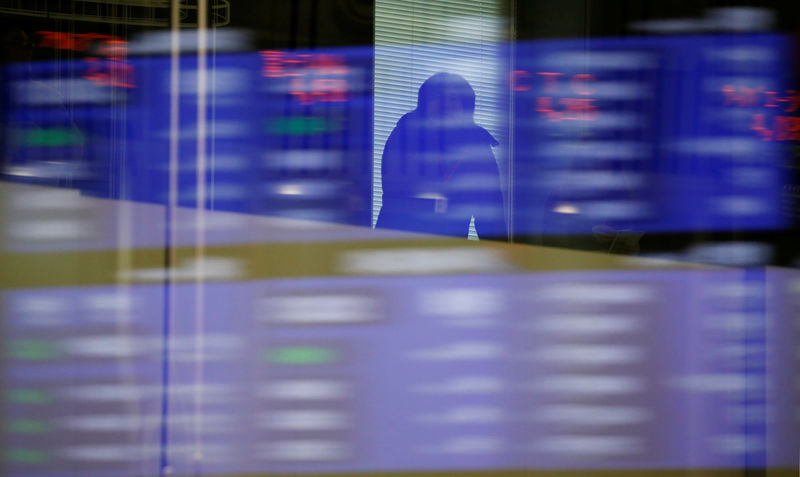By Dhara Ranasinghe
LONDON (Reuters) - World stock markets remained on shaky ground on Thursday as U.S. bond yields crept back towards four-year highs after U.S. congressional leaders reached a two-year budget deal to raise government spending by almost $300 billion.
While the deal was a rare display of bipartisanship that should stave off a government shutdown, it looks set to widen the U.S. federal deficit further and could fan inflation -- prompting the Federal Reserve to lift interest rates faster.
The Bank of England meets later in the day and is expected to say that another rate increase could be nearing as Britain's economy grows faster than expected.
European stock markets opened the day lower, with blue-chip indexes in Frankfurt, Paris and London down 0.3-0.7 percent.
MSCI's broadest index of Asia-Pacific shares outside Japan ticked up 0.1 percent, but remained near six-week lows hit earlier this week amid a rout in world stocks.
In China, Shanghai's benchmark index hit a six-month low, even as data showed the country's trade performance in January had exceeded expectations.
Investors remained wary after an aggressive selloff in equities in the past week on worries about the prospects of rising interest rates, which would shut off the liquidity spigot that has fed an exuberant rally in riskier assets.
SPENDING SOARS
Still, U.S. stock futures traded higher, pointing to a firm opening for Wall Street shares after the U.S. budget deal.
"The scale of increase in spending was much larger than what markets were expecting just a few months ago. It will have as big an impact as tax cuts," said Tomoaki Shishido, fixed income analyst at Nomura Securities.
The Cboe Volatility Index, known as the VIX and often seen as investors' "fear gauge", fell 2.3 points to 27.73, but that was still more than twice the levels generally seen in the past few months.
Combined with an expected economic boost from President Donald Trump's planned tax cuts, the increased deficit spending could overheat already strong U.S. growth and accelerate inflation to levels not seen over a decade.
Such fears drove the 10-year U.S. Treasury yield back up to 2.84 percent, near Monday's four-year peak of 2.885 percent.
The Senate and the House were both expected to vote on the deal on Thursday, amid some opposition on both sides of the aisle.
"The news yesterday has set up a test for 3 percent on 10-year Treasury yields," said Francois Savary, CIO at Prime Partners, a Swiss wealth manager. "They have made no effort to go for any consolidation, which shows they don't want to control what's happening with budget finances."
In Europe, bond yields were also higher, with the prospect of increased fiscal spending after Wednesday's coalition government deal in Germany adding to some upward pressure on yields.
BOE AWAITED
In currency markets, sterling was a touch weaker at $1.3865, not far from Tuesday's two-week low of $1.3838, ahead of a Bank of England meeting.
The BoE is widely expected to keep rates on hold as it weighs up the impact of November's rate rise on the economy.
Investors are more focused on whether any of the nine rate-setters vote for a hike at this meeting. That would be seen as adding to the likelihood of an increase in May, the next time the BoE is due to update its economic forecasts.
The budget deal in Washington supported the dollar against a broad range of currencies. At 0942 GMT it stood at 90.554, up 0.33 percent on the day.
Europe's single currency dipped to $1.2231, its lowest level in more than two weeks, while the dollar was 0.3 percent firmer at 109.66 Japanese yen.
New Zealand's dollar fell to a four-week low at $0.7190 after New Zealand's central bank lowered its forecasts for inflation right out to 2020 and said stock market volatility this week was a warning that investors were nervous about the risk of higher inflation and rising interest rates.
The Chinese yuan, which last month posted its biggest monthly gain ever, slipped back 0.5 percent to 6.3205 per dollar.
Oil prices largely reversed earlier falls on Thursday as a North Sea pipeline outage and record Chinese imports countered U.S. crude production soaring past 10 million barrels per day.

(This story has been refiled to remove extraneous word from headline.)